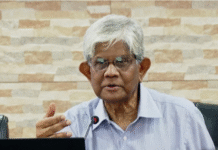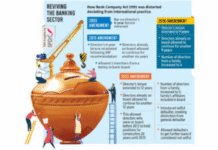
Of the banks, five are state- owned commercial banks, two state- owned specialized banks, five private commercial banks and one foreign bank
Thirteen scheduled banks, including seven public sector ones, faced a combined capital shortfall of Tk25,904 crore as of March this year, owing to their high amount of non-performing loans (NPLs).
Of the banks, five are state- owned commercial banks, two state- owned specialized banks, five private commercial banks and one foreign bank, according to the latest data of Bangladesh Bank (BB).
The banking sector is facing acute capital shortfall as the growing amount of NPLs has been forcing them to keep a large amount of money as provision with BB, which ultimately weakened their capital bases, according to a high official of the central bank.
The thirteen banks are: Sonali Bank, Agrani Bank, Rupali Bank, Basic Bank, Janata Bank, Bangladesh Krishi Bank, Rajshahi Krishi Unnayan Bank, Bangladesh Commerce Bank, ICB Islamic Bank, NRB global bank, Community Bank Bangladesh, Padma Bank and National Bank of Pakistan.
According to Bangladesh Bank guidelines on risk-based capital adequacy, banks have to maintain a minimum capital adequacy ratio (CAR)—which is a bank’s capital reserve to cover its risk exposure—of 12.50% by 2019, in line with the BASEL III requirement.
As of March this year, banks’ capital adequacy ratio (CAR), which determines the adequacy of banks’ capital in keeping with their risk exposure, stood at 11.35%, down from 11. 65% three months earlier, as noted in the data.
According to the latest data, Bangladesh Krishi Bank has the highest capital shortfall of Tk9,762 crore; followed by Sonali Bank with Tk5,790 crore; Janata Bank Tk2,563 crore; Agrani Bank Tk2,475 crore; Basic Bank Tk1, 054 crore; Rajshahi Krishi Unnayan Bank Tk856 crore and Rupali Bank at Tk444 crore.
Besides, ICB Islami Bank’s capital shortfall was Tk1,607 crore; for Bangladesh Commerce Bank it was Tk935 crore; the shortfall for Padma Bank stood at Tk325 crore; Community Bank Bangladesh was at Tk8 crore; NRB global bank at Tk8 crore and the foreign National Bank of Pakistan’s shortfall was Tk77 crore.
Capital shortfall was the direct consequence of a bank’s default loans as banks had to keep their provisioning against default loans, AB Mirza Azizul Islam, a former finance adviser to the last caretaker government, said.
Mirza added: “Foreign business people usually monitor the ratio of required capital and default loans of scheduled banks before investing. Such capital shortfalls will discourage them from investing.”
At the end of March this year, the amount of NPLs in the banking sector stood at Tk92,510 crore, which was 9.03% of the total disbursed loans, according to the latest Bangladesh Bank (BB) data.
The banking sector in Bangladesh has maintained the lowest capital adequacy ratio (CAR) compared with other South Asian countries — India, Pakistan and Sri Lanka — says Bangladesh Bank’s Financial Stability Report, 2019.
In the last 10 years, since the fiscal year 2009-10, the government has supplied a total of Tk17,521 crore in capitalization to ailing state banks with budgetary allocation.
Economists have raised concerns about the practice of recapitalizing state-owned banks with budgetary allocations, saying that the trend will not help improve these banks’ health. As a matter of fact, they believe it will encourage loan defaults.









